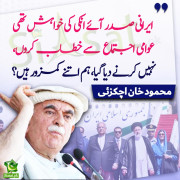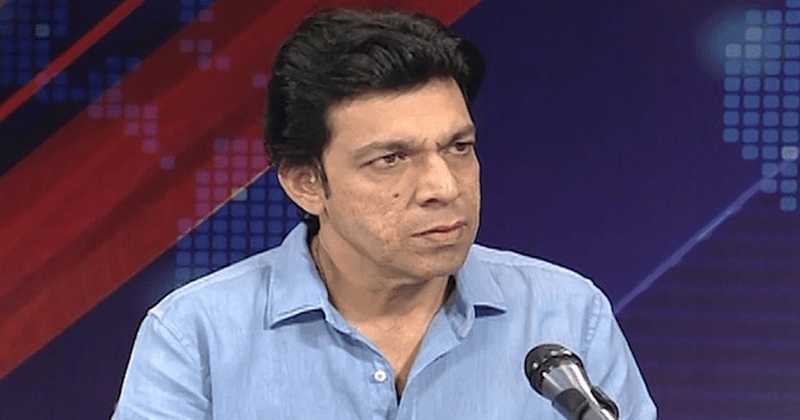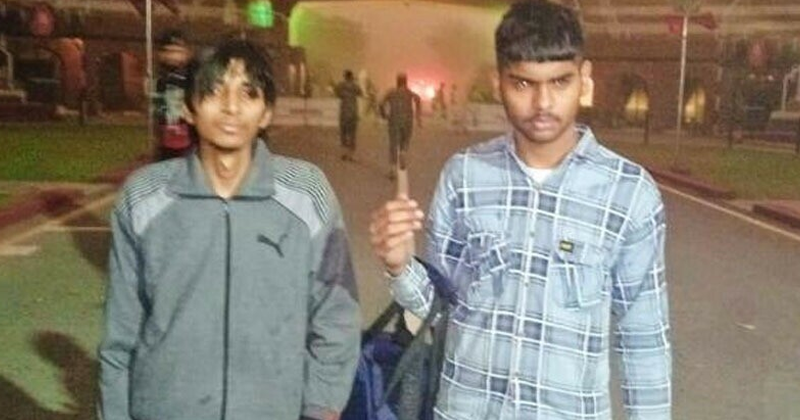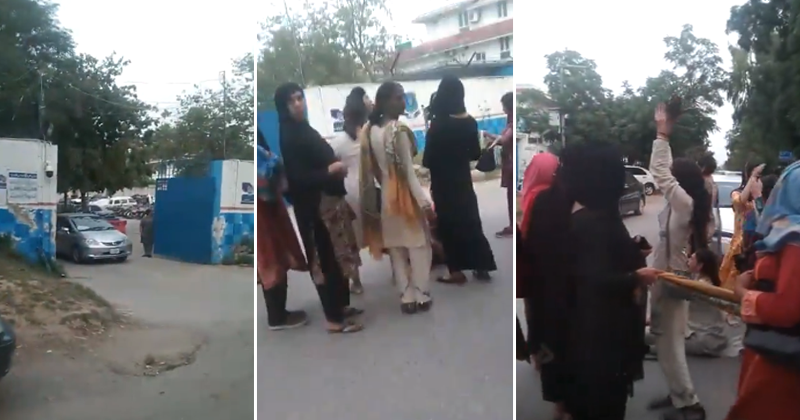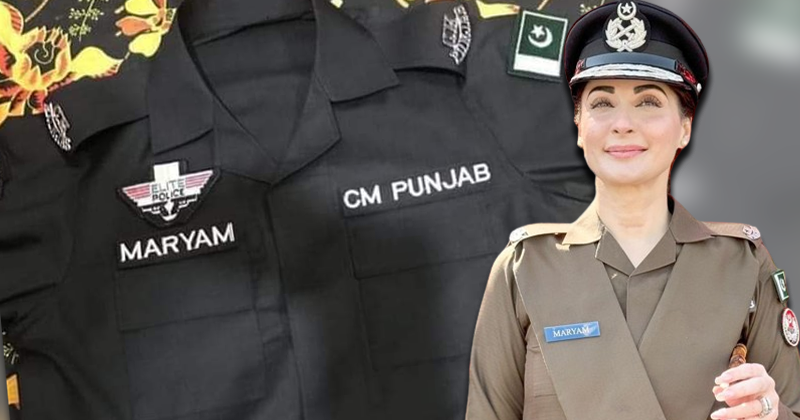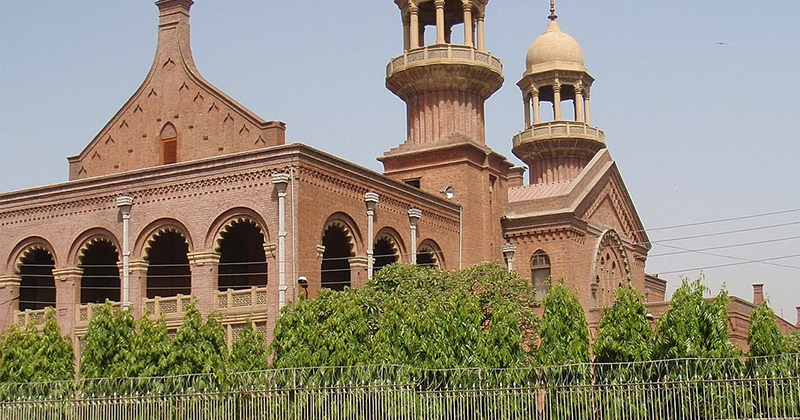Following is a recently published excerpt from the book of General Sukwant Signh about the Battle of Hussaniwala that took place in the 71 war between india and Pakistan.
Most Pakistanis perhaps dont know that there were battles in the 71 war in which we gave the Indians one hell of kicking and in fact we captured Indian Territory in the west. The fall of Dhaka had more to do with treachery rather than competence of the Indian army.
I will add here, without giving names that a family member of mine was part of the Battle of Hussaniwala and Im proud of to know that he was part of the butt kicking that the Indians received on this front.
---------------------------------------------------------------
1971 War: The Battle of Hussainiwala
The Indian enclave of Hussainiwala lies west of the Sutlej along the Ferozepur-Lahore highway. It covers about 7.5 hectares and runs in a parabola from the rail and road bridge towards Shamoke in a northwesterly direction. The countryside is mainly riverine and crisscrossed with protective bunds, prominent among them being the Ullake, the Hockey Spur, the Perimeter and the Guide. All of them run parallel to the river from southwest to northeast and at right angles to the old railway and road embankments.
The importance of this enclave to India is threefold. Economically, it forms a part of the Hussainiwala headworks feeding the Gang Canal system which irrigates the arid district of Ganganagar and Karanpur. This role has however been debited considerably after the construction of the Harike headworks and the Rajasthan feeder. Politically, it is the site of the Shaheed Bhagat Singh memorial. Militarily, the area affords depth to the headworks and the road-rail bridge in defence and provides a readymade bridgehead across the Sutlej to support offensive operations in developing a thrust towards Kasur and Lahore. In addition, it can also act as a launching pad for a counteroffensive to relieve pressure against formations holding the axes emanating from Kasur towards Amritsar and the Beas.
The defence of this enclave was entrusted to 7 Infantry Division under Freemantle. The division was housed in the Ferozepur complex and nearby cantonments and had operational responsibility west of the Sutlej, mainly to deny the Lahore-Khalra-Patti axes and Kasur-Bhikiwind-Amritsar roads to the enemy. In the event of war 7 Infantry Division was to move out of the Ferozepur complex and wheel northwestward leaving the approaches to Ferozepur and thence to Ludhiana, Zira and Faridkot for 14 Infantry Division to defend on its induction into the area. Since moving this division from the hinterland would take some time, it was considered prudent to occupy the enclave as part of the covering force to facilitate induction of 14 Infantry Division against any Pakistani pre-emptive action.
Freemantle chose 15 Punjab, with its redoubtable fighting records, for this task. Originally known as First Patiala, this unit was incorporated in the Indian Army on the merger of the erstwhile state forces. It had won fame in World War II under Col Balwant Singh, described by Lord Wavell as the grand old man of Patiala. Balwant Singh and his successors had led the unit to victory in battle and had won a large number of awards. After the merger, it had shown its mettle in the Jammu and Kashmir operations under Lt Col Sukhdev Singh. It was used there mostly as the theatre reserve and was often utilized to retrieve adverse situations on both sides of the Pir Panjal range. The battalion later won laurels in peace and war. It had the distinction of moving from Calcutta to Sikkim in 24 hours in the 1962 war and occupying the important passes of Jelepla and Dhangchula on the shoestring resources of the time under a fine soldier, Lt Col Joginder Singh Mandher.
The battalion was moved to the Hussainiwalla enclave in February 1971 and was given the task of defending it, particularly the headworks. Three companies of the Border Security Force in that area were placed under the battalions operational command to hold border outposts and generally augment its man-power resources. For artillery support, the battalion had assured call on one field regiment plus, and the general availability of some more artillery, including a medium regiment, most of the time.
One squadron of armour was to be at hand for immediate induction into the enclave whenever required operationally. 15 Punjab, under Lt Col Shastry, set out to plan the enclaves defence on induction into it in February 1971. He decided to cover the main Kasur-Ferozepur axis with C Company in the vicinity of the barrier itself and placed D Company in depth near the perimeter to meet any outflanking enemy move from the southwest along the river line.
A and B Companies held the memorial and guideline bund positions respectively. The battalions defended area was compact, with mutually supporting and well-sited weapons. BSF was to hold the BOPs of BP 180, Ullake and Rajoke with one company each and a platoon at Shamoke. The defences were systematically prepared with extremely well-constructed fortifications, laying minefields and other obstacles over six months or so.
All this was executed in the proximity and under observation of Pakistan troops deployed on peacetime duties along the border. The battalion headquarters were comfortably housed in an Irrigation Department bungalow on the home side of the river, with a plan to shift to the enclave at the start of hostilities. The localities were stocked for ammunition and rations to last 15 days of intense war and were not dependent on replenishment from the rear along the only bridge. It may be safely assumed that Pakistan had pinpointed these defences down to a single bunker, especially because of heavy international traffic along this route from Pakistan to India and because our weaponry, sited on the high embankments, was clearly visible from the road.
The battalion group was initially placed under the command of 21 Infantry Brigade, located some 128 kilometres away near Patti crossroads. But the situation was redressed by placing it under the command of 35 Infantry Brigade on its induction into the area. The brigade group and this battalion in turn came under the operational control of Headquarters 7 Infantry
Division, located west of the Sutlej with precarious communication links. 14 Infantry Division as concentrated somewhere in the Faridkot-Kotkapura area but had no hand in the conduct of operations in the Ferozepur complex and the Hussainiwala enclave.
On 3 December, routine continued as usual. A tea party was organized at battalion headquarters in the irrigation bungalow to bid farewell to the retiring Subedar major, and all the officers and junior commissioned officers, except the minimum essential required for vigilance in the enclave, attended it. The traffic of foreign tourists and load carriers flowed as usual, and the last vehicle left the barrier almost at dusk. Unknown to the gathering at the party, Pakistan 106 Infantry Brigade had concentrated its attacking troops close to the barrier and the localities defended by the perimeter company.
The Pakistani plan envisaged a three-pronged attack, with one thrust along the main road axis through the barrier, the second from the south towards the mouth of the bridge over the perimeter-defended locality, and the third from the northwesterly direction overrunning the BOPS.
All the localities were accordingly subjected to intense artillery shelling about 1815 hours, and under its cover some Pakistani detachments occupied the Ullake bund junction against the surprised opposition, almost without resistance, as a preliminary operation. Some officers attending the tea party rushed back to their command posts after a hurried goodbye to the departing subedar major. Shastry remained behind, glued to his telephone in the irrigation bungalow on the home bank. The main attack commenced about 1830 hours with Pakistan 3 Punjab assaulting the perimeter locality and walking straight into a well-concealed minefield in thick sarkanda outgrowth which caught fire from exploding mines.
Casualties notwithstanding, the Pakistanis pressed home the attack and, fighting from bunker to bunker, steadily worked their way north of the bridge. At the same time, Pakistan 41 Baluch commenced an assault along the right back of Dipalpur bund towards the memorial through the barrier-defended locality. 15 Punjab resisted stiffly and a fierce hand-to-hand battle ensued in which Maj Waraich, commanding the barrier company locality, was seen facing wave after wave of assaulting Pakistani troops. Despite the resistance of the defenders, the Pakistani assault progressed, but was finally halted at the memorial, which changed hands twice.
Meanwhile, the perimeter locality was being eroded bit by bit by persistent and sustained pressure. About 2030 hours, Shastry decided to induct one troop of A Squadron, 3 Cavalry into the enclave and ordered the bridge to be armed for demolition. The chambers had been charged earlier as part of the overall corps demolition plan. The leading tank of the troop went across the bridge and entered the perimeter locality where the fire fight was intense. It became known later that an RCL gun located in depth on the guide bund fired at this tank, thinking it belonged to the enemy.
Although the tank was not hit, the crew got jittery and turned back to proceed to the home bank. The demolition officer in charge, seeing the phantomlike shadow of this retreating tank, thought Pakistani armour was rushing the bridge. Recalling the parameters of his task, that the bridge should not fall intact into Pakistani hands at any cost, he pressed the electric exploder, demolishing four spans of the main and two of the Gang Canal bridges instantaneously and damaging some sluice gates badly.
The water impounded by the headworks started emptying rapidly and the tank fell into the river bed with guns blazing at the demolition party on the home bank. A and B Companies were intact, but the situation of C and D Companies was confused. By all accounts, it appeared that the perimeter company had been overrun. Fighting went on till the Pakistani pressure reached its peak about 0320 hours on 4 December, when communication with the forward companies broke down. Freemantle could not get through to Brig P N Anand, in command of the operation, and did not know what was happening.
The brigadier sat alongside Shastry with hands clasped, and both were content with controlling the battle in the warm comfort of the irrigation bungalow. Despite the tenacity of the Pakistani attack, no further progress was made because of the magnificient resistance put up by 15 Punjab, helped by accurate and intense artillery fire although visibility was poor. The Pakistani attack temporarily came to a standstill. But the BSF posts of Ullake, Rajoke and Shamoke fell to determined attacks, and their defenders were withdrawn across the river overnight.
By first light on 4 December, it became clear that A and B Companies were still holding out at the memorial and the guide bund. One platoon worth of troops in the perimeter and barrier localities was showing life with a token resistance of intermittent fire. Since telephonic communication between the home and far banks was disrupted through heavy shelling and demolition of part of the bridge, conduct of the battle by remote control had become precarious. Anand and Shastry however efused to venture out of their hideout in the bungalow.
In the usual formal briefing on the progress of operations at Army HQ, the Chief was apprised of the setback at Hussainiwala. He had served in Ferozepur as a brigade commander, knew the ground as also the importance of holding the enclave. He ordered immediate measures to be taken to relieve the pressure on 15 Punjab and to see that the enclave did not fall.
Massive air retaliation was arranged soon after. Throughout the day the Air Force flew 24 sorties in the confined target area. In addition, the artillery observation posts sited on the tower on the home bank brought down intense and accurate artillery fire on the enemy concentrations, causing damage to the reserve echelons as well as to some tanks of 4 Cavalry supporting the Pakistani attack. Our stout-hearted and valiant troops kept the enemy at bay throughout the day to the extent that no penetration beyond the memorial was allowed.
Freemantle was out of touch with the Hussainiwala battle because of the communication failure, and the distance between divisional headquarters and the scene of operations forbade him to leave headquarters in view of his other operational commitments. Anand fed him with bits and pieces of information from his headquarters, for which he kept shuttling between Ferozepur and the headworks. Shastry continued sitting in the irrigation bungalow and talked to his forward troops on intermittent radio transmissions.
The overrunning of his forward companies, demolition of the road-rail bridge, screams for the evacuation of casualties and the combined noise of air strikes and artillery bombardment and the whine of machine gun bullets conjured up an image of defeat in his mind. Anand, with little war experience of his own, also fell prey to the same fears.
Between the two of them they painted pictures of a hopeless situation to Freemantle, sitting about 128 kilometres distant and out of close touch with the battle. In the afternoon of 4 December, Anand started talking of withdrawal. He argued that the restricted space for action did not allow reinforcement of the defended localities on the far bank. It would be futile to double the strength of the limited pillboxes in hand, he said. Most parts of the enclave had fallen, and it was only a matter of time before the remaining localities followed. The bridge having now been rendered unusable, defence of the headworks could easily be carried out from the home bank.
Anand said it would be prudent to cut the 15 Punjab losses rather than see the battalions extermination piecemeal. He painted an exaggerated picture of enemy strength, to the extent of two infantry brigades and an armoured regiment. He insisted that the bridge had been demolished on a Pakistani attempt to rush it with armour. The BSF withdrawal had exposed the right flank, and the Pakistan pincer was due to close any moment. The fast-receding water in the headworks would make a delayed withdrawal well nigh impossible. The way was slowly being paved to accept defeat as inevitable.
Rawlley, the corps commander operationally responsible for the area, decided to fly to Ferozepur to see things for himself and reassure Anand, another Guardsman. The mechanical failure of his helicopter prevented his flight, and it fell to Free-mantle to decide on withdrawal of 15 Punjab on the night of 4/5 December. Basing his decision on the distorted version of the battle given by the panicky Anand and Shastry, he apprised Rawlley of his intentions about 1730 hours on 4 December. Rawlley had his own reservations about withdrawal but did not countermand Freemantles decision.
Accordingly, unknown to Army headquarters, orders were issued at 1800 hours for the final withdrawal. They were received by the forward troops with mixed feelings, especially when they had kept the Pakistani attackers at bay throughout the day. Instead of being reinforced and joined by their commanding officer and other officers for battle at night, they were being asked to withdraw. Withdrawal started about 2000 hours and, using an armada of assault boats and a couple of amphibious vehicles, was completed by 2330 hours. There was no attempt throughout on the part of the Pakistanis to interfere.
The reputation of First Patialas, built over years of hard fighting, and nourished by the blood of several generations of valiant soldiery, was ruined in one day. The rank and file were indignant at the cowardly behaviour of their commanding officer and resentful towards the higher command, which had denied them the opportunity to decide the issue in battle. A court of the casualties revealed that only 17 were killed inaction and three officers and 31 other ranks were wounded,while two officers, two junior commissioned officers and 72 other ranks were missing. This clearly indicated that the casualties were no more than a companys worth, and the remaining strength was capable of holding its own, especially so when they were fighting from well-prepared and properly coordinated defences.
Fazal Muqeem has paid this tribute to 15 Punjab: The Indian 15 Punjab fought extremely well, although they had been abandoned by its neighbouring troops. And later, describing the memorial battle, he says: Pakistan troops occupied the around floor with picked volunteers, but could not reach the top as the brave Indian 15 Punjabis continued defying these attempts from the top floor.
What were the causes of failure? The responsibility must squarely rest on Shastry, who as commanding officer of the battalion allowed himself and a few other officers to be deliberately left out of battle on the home bank while his unit was engaged in bloody combat on the far side. His job was with his men, and he should have been with them fighting shoulder to shoulder and going from bunker to bunker rallying defiance. Thus, he would have been in touch with the pulse of his battle and the morale of his men to gauge the seriousness of the situation at firsthand. He had no right to stay behind, whatever the excuse.
And Anand was blameworthy for allowing Shastry to stay behind and for accepting at face value Shastrys unfounded fears. The weight of the enemy attack was no more than that of two battalions and a part of an armoured squadron. 15 Punjab, fighting from well-prepared and adequately stocked localities, was capable of taking on determined attacks. The attacking troops had suffered casualties and the momentum of their attack had been checked.
Persistent air attacks and intensive artillery shelling had caused havoc in the enemy depth areas, and it would have taken them some time to renew the attack. The position at first light on 4 December was by no means hopeless. With some reinforcement and reorganized defence it would have been possible to defend the rest of the enclave determinedly.
The casualty figure did not warrant a withdrawal. It was engineered by Anand more out of fear rather than based on the actual ties of the battlefield. Freemantle was far too distant to be either able to know what was going on firsthand or to exercise his personality. It would have been prudent for Rawlley to place this brigade under command GOC 14 Infantry Division, who by virtue of his proximity could have directed the battle with better knowledge of events rather than on reports, real and imaginary, exaggerated beyond the realm of reality.
The Sehjra bulge, a Pakistani enclave, lies northeast of the Hussainiwalla enclave. Its capture was part of 7 Infantry Divisions contingency planning. It was planned to attack the bulge on the night of4/5 December, but it was later postponed to the night of 5/6 December because of unpreparedness. At the time of deciding to withdraw from the Hussainiwala enclave, it did not occur to Freemantle that holding the enclave was complementary to defending the Sehjra bulge.
The capture of the bulge and the development of a thrust from there towards the rear of the troops facing 15 Punjab in the Hussainiwala enclave would have indirectly relieved pressure against 15 Punjab and should have been undertaken on the night of 4/5 December. The withdrawal decision should have been withheld till its effect was known. Regrettably, neither Rawlley nor Candeth offered such advice to Freemantle. For want of correct appreciation of the overall direction of the war the local battle for defence of the Hussainiwala enclave was lost.
Reader's Response 1 Posts | Submit your Post
Posted on: April 22, 2011 at 12:44 PM
Posted by: NIRBHAI SINGH
after joining BSF and only six months of training i was sent to ulloke bop with 15 other new recruites in oct 1971.all the new jawans were placed in bunkers under the bundh near to pak post. on 3rd dec eve pak artillery started shelling.after 15 minutes a head constable came to our bunker and ordered new recruites to their positions.then he asked me to join him.he told me that he will command the coy as no other senior was there.all at bop then knew that all the officers were veiwing a film at ferozepur on that day..it was once or twice we had a visit of our coy comdt in a week and that just for few minutes.so that havildar from majitha in amritsar had command and i was his assistant.we went bunker to bunker to support our fighting jawans it was very heavy shelling from pak army.we heard pak tanks not far from us in the direction of checkpost.then me and him we went to store and picked up rum and distributed it to every jawan in every bunker.while we went to mmg bunker our jawans complained that they have no more firing pins so they can,t fire.then we sent a wireless message to our hq to supply the needed pins.we got the response that they cant help us and we can bring it ourselves.it was river in between and no boat.our jawans fought in courge but without firing power it was use less.then around 0300 am we got a wireless message from 15 punjab that the bridge was captured..our wireless operator did knew little english and asked me what it means.in the meantime we heard that a major in 15 punjab is fighting fiercly with his forces against pak army at the bridge.now bsf- we didnot had any officer to lead our forces,they all were at ferozepur.but bsf nco,s and jawans fought bravely whole night.i am still proud of this little i could do for my country.i quit bsf in 1974 after 3 years.
--------------------------------------------------------------
Just to add more, the above account is from an Indian perspective and you can see a lot of could have, would have, might have been type of sentences but fact is fact and even then they have had to admit defeat on the Hussaniwala front no matter what.
In the first week of Decemebr of 1971 two gallant Pakistani infantry battalions and 1 armour squardron with artilriary cover broke though the Indian defenses and won territory for their country.
Most Pakistanis perhaps dont know that there were battles in the 71 war in which we gave the Indians one hell of kicking and in fact we captured Indian Territory in the west. The fall of Dhaka had more to do with treachery rather than competence of the Indian army.
I will add here, without giving names that a family member of mine was part of the Battle of Hussaniwala and Im proud of to know that he was part of the butt kicking that the Indians received on this front.
---------------------------------------------------------------
1971 War: The Battle of Hussainiwala
The Indian enclave of Hussainiwala lies west of the Sutlej along the Ferozepur-Lahore highway. It covers about 7.5 hectares and runs in a parabola from the rail and road bridge towards Shamoke in a northwesterly direction. The countryside is mainly riverine and crisscrossed with protective bunds, prominent among them being the Ullake, the Hockey Spur, the Perimeter and the Guide. All of them run parallel to the river from southwest to northeast and at right angles to the old railway and road embankments.
The importance of this enclave to India is threefold. Economically, it forms a part of the Hussainiwala headworks feeding the Gang Canal system which irrigates the arid district of Ganganagar and Karanpur. This role has however been debited considerably after the construction of the Harike headworks and the Rajasthan feeder. Politically, it is the site of the Shaheed Bhagat Singh memorial. Militarily, the area affords depth to the headworks and the road-rail bridge in defence and provides a readymade bridgehead across the Sutlej to support offensive operations in developing a thrust towards Kasur and Lahore. In addition, it can also act as a launching pad for a counteroffensive to relieve pressure against formations holding the axes emanating from Kasur towards Amritsar and the Beas.
The defence of this enclave was entrusted to 7 Infantry Division under Freemantle. The division was housed in the Ferozepur complex and nearby cantonments and had operational responsibility west of the Sutlej, mainly to deny the Lahore-Khalra-Patti axes and Kasur-Bhikiwind-Amritsar roads to the enemy. In the event of war 7 Infantry Division was to move out of the Ferozepur complex and wheel northwestward leaving the approaches to Ferozepur and thence to Ludhiana, Zira and Faridkot for 14 Infantry Division to defend on its induction into the area. Since moving this division from the hinterland would take some time, it was considered prudent to occupy the enclave as part of the covering force to facilitate induction of 14 Infantry Division against any Pakistani pre-emptive action.
Freemantle chose 15 Punjab, with its redoubtable fighting records, for this task. Originally known as First Patiala, this unit was incorporated in the Indian Army on the merger of the erstwhile state forces. It had won fame in World War II under Col Balwant Singh, described by Lord Wavell as the grand old man of Patiala. Balwant Singh and his successors had led the unit to victory in battle and had won a large number of awards. After the merger, it had shown its mettle in the Jammu and Kashmir operations under Lt Col Sukhdev Singh. It was used there mostly as the theatre reserve and was often utilized to retrieve adverse situations on both sides of the Pir Panjal range. The battalion later won laurels in peace and war. It had the distinction of moving from Calcutta to Sikkim in 24 hours in the 1962 war and occupying the important passes of Jelepla and Dhangchula on the shoestring resources of the time under a fine soldier, Lt Col Joginder Singh Mandher.
The battalion was moved to the Hussainiwalla enclave in February 1971 and was given the task of defending it, particularly the headworks. Three companies of the Border Security Force in that area were placed under the battalions operational command to hold border outposts and generally augment its man-power resources. For artillery support, the battalion had assured call on one field regiment plus, and the general availability of some more artillery, including a medium regiment, most of the time.
One squadron of armour was to be at hand for immediate induction into the enclave whenever required operationally. 15 Punjab, under Lt Col Shastry, set out to plan the enclaves defence on induction into it in February 1971. He decided to cover the main Kasur-Ferozepur axis with C Company in the vicinity of the barrier itself and placed D Company in depth near the perimeter to meet any outflanking enemy move from the southwest along the river line.
A and B Companies held the memorial and guideline bund positions respectively. The battalions defended area was compact, with mutually supporting and well-sited weapons. BSF was to hold the BOPs of BP 180, Ullake and Rajoke with one company each and a platoon at Shamoke. The defences were systematically prepared with extremely well-constructed fortifications, laying minefields and other obstacles over six months or so.
All this was executed in the proximity and under observation of Pakistan troops deployed on peacetime duties along the border. The battalion headquarters were comfortably housed in an Irrigation Department bungalow on the home side of the river, with a plan to shift to the enclave at the start of hostilities. The localities were stocked for ammunition and rations to last 15 days of intense war and were not dependent on replenishment from the rear along the only bridge. It may be safely assumed that Pakistan had pinpointed these defences down to a single bunker, especially because of heavy international traffic along this route from Pakistan to India and because our weaponry, sited on the high embankments, was clearly visible from the road.
The battalion group was initially placed under the command of 21 Infantry Brigade, located some 128 kilometres away near Patti crossroads. But the situation was redressed by placing it under the command of 35 Infantry Brigade on its induction into the area. The brigade group and this battalion in turn came under the operational control of Headquarters 7 Infantry
Division, located west of the Sutlej with precarious communication links. 14 Infantry Division as concentrated somewhere in the Faridkot-Kotkapura area but had no hand in the conduct of operations in the Ferozepur complex and the Hussainiwala enclave.
On 3 December, routine continued as usual. A tea party was organized at battalion headquarters in the irrigation bungalow to bid farewell to the retiring Subedar major, and all the officers and junior commissioned officers, except the minimum essential required for vigilance in the enclave, attended it. The traffic of foreign tourists and load carriers flowed as usual, and the last vehicle left the barrier almost at dusk. Unknown to the gathering at the party, Pakistan 106 Infantry Brigade had concentrated its attacking troops close to the barrier and the localities defended by the perimeter company.
The Pakistani plan envisaged a three-pronged attack, with one thrust along the main road axis through the barrier, the second from the south towards the mouth of the bridge over the perimeter-defended locality, and the third from the northwesterly direction overrunning the BOPS.
All the localities were accordingly subjected to intense artillery shelling about 1815 hours, and under its cover some Pakistani detachments occupied the Ullake bund junction against the surprised opposition, almost without resistance, as a preliminary operation. Some officers attending the tea party rushed back to their command posts after a hurried goodbye to the departing subedar major. Shastry remained behind, glued to his telephone in the irrigation bungalow on the home bank. The main attack commenced about 1830 hours with Pakistan 3 Punjab assaulting the perimeter locality and walking straight into a well-concealed minefield in thick sarkanda outgrowth which caught fire from exploding mines.
Casualties notwithstanding, the Pakistanis pressed home the attack and, fighting from bunker to bunker, steadily worked their way north of the bridge. At the same time, Pakistan 41 Baluch commenced an assault along the right back of Dipalpur bund towards the memorial through the barrier-defended locality. 15 Punjab resisted stiffly and a fierce hand-to-hand battle ensued in which Maj Waraich, commanding the barrier company locality, was seen facing wave after wave of assaulting Pakistani troops. Despite the resistance of the defenders, the Pakistani assault progressed, but was finally halted at the memorial, which changed hands twice.
Meanwhile, the perimeter locality was being eroded bit by bit by persistent and sustained pressure. About 2030 hours, Shastry decided to induct one troop of A Squadron, 3 Cavalry into the enclave and ordered the bridge to be armed for demolition. The chambers had been charged earlier as part of the overall corps demolition plan. The leading tank of the troop went across the bridge and entered the perimeter locality where the fire fight was intense. It became known later that an RCL gun located in depth on the guide bund fired at this tank, thinking it belonged to the enemy.
Although the tank was not hit, the crew got jittery and turned back to proceed to the home bank. The demolition officer in charge, seeing the phantomlike shadow of this retreating tank, thought Pakistani armour was rushing the bridge. Recalling the parameters of his task, that the bridge should not fall intact into Pakistani hands at any cost, he pressed the electric exploder, demolishing four spans of the main and two of the Gang Canal bridges instantaneously and damaging some sluice gates badly.
The water impounded by the headworks started emptying rapidly and the tank fell into the river bed with guns blazing at the demolition party on the home bank. A and B Companies were intact, but the situation of C and D Companies was confused. By all accounts, it appeared that the perimeter company had been overrun. Fighting went on till the Pakistani pressure reached its peak about 0320 hours on 4 December, when communication with the forward companies broke down. Freemantle could not get through to Brig P N Anand, in command of the operation, and did not know what was happening.
The brigadier sat alongside Shastry with hands clasped, and both were content with controlling the battle in the warm comfort of the irrigation bungalow. Despite the tenacity of the Pakistani attack, no further progress was made because of the magnificient resistance put up by 15 Punjab, helped by accurate and intense artillery fire although visibility was poor. The Pakistani attack temporarily came to a standstill. But the BSF posts of Ullake, Rajoke and Shamoke fell to determined attacks, and their defenders were withdrawn across the river overnight.
By first light on 4 December, it became clear that A and B Companies were still holding out at the memorial and the guide bund. One platoon worth of troops in the perimeter and barrier localities was showing life with a token resistance of intermittent fire. Since telephonic communication between the home and far banks was disrupted through heavy shelling and demolition of part of the bridge, conduct of the battle by remote control had become precarious. Anand and Shastry however efused to venture out of their hideout in the bungalow.
In the usual formal briefing on the progress of operations at Army HQ, the Chief was apprised of the setback at Hussainiwala. He had served in Ferozepur as a brigade commander, knew the ground as also the importance of holding the enclave. He ordered immediate measures to be taken to relieve the pressure on 15 Punjab and to see that the enclave did not fall.
Massive air retaliation was arranged soon after. Throughout the day the Air Force flew 24 sorties in the confined target area. In addition, the artillery observation posts sited on the tower on the home bank brought down intense and accurate artillery fire on the enemy concentrations, causing damage to the reserve echelons as well as to some tanks of 4 Cavalry supporting the Pakistani attack. Our stout-hearted and valiant troops kept the enemy at bay throughout the day to the extent that no penetration beyond the memorial was allowed.
Freemantle was out of touch with the Hussainiwala battle because of the communication failure, and the distance between divisional headquarters and the scene of operations forbade him to leave headquarters in view of his other operational commitments. Anand fed him with bits and pieces of information from his headquarters, for which he kept shuttling between Ferozepur and the headworks. Shastry continued sitting in the irrigation bungalow and talked to his forward troops on intermittent radio transmissions.
The overrunning of his forward companies, demolition of the road-rail bridge, screams for the evacuation of casualties and the combined noise of air strikes and artillery bombardment and the whine of machine gun bullets conjured up an image of defeat in his mind. Anand, with little war experience of his own, also fell prey to the same fears.
Between the two of them they painted pictures of a hopeless situation to Freemantle, sitting about 128 kilometres distant and out of close touch with the battle. In the afternoon of 4 December, Anand started talking of withdrawal. He argued that the restricted space for action did not allow reinforcement of the defended localities on the far bank. It would be futile to double the strength of the limited pillboxes in hand, he said. Most parts of the enclave had fallen, and it was only a matter of time before the remaining localities followed. The bridge having now been rendered unusable, defence of the headworks could easily be carried out from the home bank.
Anand said it would be prudent to cut the 15 Punjab losses rather than see the battalions extermination piecemeal. He painted an exaggerated picture of enemy strength, to the extent of two infantry brigades and an armoured regiment. He insisted that the bridge had been demolished on a Pakistani attempt to rush it with armour. The BSF withdrawal had exposed the right flank, and the Pakistan pincer was due to close any moment. The fast-receding water in the headworks would make a delayed withdrawal well nigh impossible. The way was slowly being paved to accept defeat as inevitable.
Rawlley, the corps commander operationally responsible for the area, decided to fly to Ferozepur to see things for himself and reassure Anand, another Guardsman. The mechanical failure of his helicopter prevented his flight, and it fell to Free-mantle to decide on withdrawal of 15 Punjab on the night of 4/5 December. Basing his decision on the distorted version of the battle given by the panicky Anand and Shastry, he apprised Rawlley of his intentions about 1730 hours on 4 December. Rawlley had his own reservations about withdrawal but did not countermand Freemantles decision.
Accordingly, unknown to Army headquarters, orders were issued at 1800 hours for the final withdrawal. They were received by the forward troops with mixed feelings, especially when they had kept the Pakistani attackers at bay throughout the day. Instead of being reinforced and joined by their commanding officer and other officers for battle at night, they were being asked to withdraw. Withdrawal started about 2000 hours and, using an armada of assault boats and a couple of amphibious vehicles, was completed by 2330 hours. There was no attempt throughout on the part of the Pakistanis to interfere.
The reputation of First Patialas, built over years of hard fighting, and nourished by the blood of several generations of valiant soldiery, was ruined in one day. The rank and file were indignant at the cowardly behaviour of their commanding officer and resentful towards the higher command, which had denied them the opportunity to decide the issue in battle. A court of the casualties revealed that only 17 were killed inaction and three officers and 31 other ranks were wounded,while two officers, two junior commissioned officers and 72 other ranks were missing. This clearly indicated that the casualties were no more than a companys worth, and the remaining strength was capable of holding its own, especially so when they were fighting from well-prepared and properly coordinated defences.
Fazal Muqeem has paid this tribute to 15 Punjab: The Indian 15 Punjab fought extremely well, although they had been abandoned by its neighbouring troops. And later, describing the memorial battle, he says: Pakistan troops occupied the around floor with picked volunteers, but could not reach the top as the brave Indian 15 Punjabis continued defying these attempts from the top floor.
What were the causes of failure? The responsibility must squarely rest on Shastry, who as commanding officer of the battalion allowed himself and a few other officers to be deliberately left out of battle on the home bank while his unit was engaged in bloody combat on the far side. His job was with his men, and he should have been with them fighting shoulder to shoulder and going from bunker to bunker rallying defiance. Thus, he would have been in touch with the pulse of his battle and the morale of his men to gauge the seriousness of the situation at firsthand. He had no right to stay behind, whatever the excuse.
And Anand was blameworthy for allowing Shastry to stay behind and for accepting at face value Shastrys unfounded fears. The weight of the enemy attack was no more than that of two battalions and a part of an armoured squadron. 15 Punjab, fighting from well-prepared and adequately stocked localities, was capable of taking on determined attacks. The attacking troops had suffered casualties and the momentum of their attack had been checked.
Persistent air attacks and intensive artillery shelling had caused havoc in the enemy depth areas, and it would have taken them some time to renew the attack. The position at first light on 4 December was by no means hopeless. With some reinforcement and reorganized defence it would have been possible to defend the rest of the enclave determinedly.
The casualty figure did not warrant a withdrawal. It was engineered by Anand more out of fear rather than based on the actual ties of the battlefield. Freemantle was far too distant to be either able to know what was going on firsthand or to exercise his personality. It would have been prudent for Rawlley to place this brigade under command GOC 14 Infantry Division, who by virtue of his proximity could have directed the battle with better knowledge of events rather than on reports, real and imaginary, exaggerated beyond the realm of reality.
The Sehjra bulge, a Pakistani enclave, lies northeast of the Hussainiwalla enclave. Its capture was part of 7 Infantry Divisions contingency planning. It was planned to attack the bulge on the night of4/5 December, but it was later postponed to the night of 5/6 December because of unpreparedness. At the time of deciding to withdraw from the Hussainiwala enclave, it did not occur to Freemantle that holding the enclave was complementary to defending the Sehjra bulge.
The capture of the bulge and the development of a thrust from there towards the rear of the troops facing 15 Punjab in the Hussainiwala enclave would have indirectly relieved pressure against 15 Punjab and should have been undertaken on the night of 4/5 December. The withdrawal decision should have been withheld till its effect was known. Regrettably, neither Rawlley nor Candeth offered such advice to Freemantle. For want of correct appreciation of the overall direction of the war the local battle for defence of the Hussainiwala enclave was lost.
Reader's Response 1 Posts | Submit your Post
Posted on: April 22, 2011 at 12:44 PM
Posted by: NIRBHAI SINGH
after joining BSF and only six months of training i was sent to ulloke bop with 15 other new recruites in oct 1971.all the new jawans were placed in bunkers under the bundh near to pak post. on 3rd dec eve pak artillery started shelling.after 15 minutes a head constable came to our bunker and ordered new recruites to their positions.then he asked me to join him.he told me that he will command the coy as no other senior was there.all at bop then knew that all the officers were veiwing a film at ferozepur on that day..it was once or twice we had a visit of our coy comdt in a week and that just for few minutes.so that havildar from majitha in amritsar had command and i was his assistant.we went bunker to bunker to support our fighting jawans it was very heavy shelling from pak army.we heard pak tanks not far from us in the direction of checkpost.then me and him we went to store and picked up rum and distributed it to every jawan in every bunker.while we went to mmg bunker our jawans complained that they have no more firing pins so they can,t fire.then we sent a wireless message to our hq to supply the needed pins.we got the response that they cant help us and we can bring it ourselves.it was river in between and no boat.our jawans fought in courge but without firing power it was use less.then around 0300 am we got a wireless message from 15 punjab that the bridge was captured..our wireless operator did knew little english and asked me what it means.in the meantime we heard that a major in 15 punjab is fighting fiercly with his forces against pak army at the bridge.now bsf- we didnot had any officer to lead our forces,they all were at ferozepur.but bsf nco,s and jawans fought bravely whole night.i am still proud of this little i could do for my country.i quit bsf in 1974 after 3 years.
--------------------------------------------------------------
Just to add more, the above account is from an Indian perspective and you can see a lot of could have, would have, might have been type of sentences but fact is fact and even then they have had to admit defeat on the Hussaniwala front no matter what.
In the first week of Decemebr of 1971 two gallant Pakistani infantry battalions and 1 armour squardron with artilriary cover broke though the Indian defenses and won territory for their country.




